That may be considered as the wrath of the God or the result of our shameless messing with the Nature; you can weave any story on the basis of your faith, your conscious or your logical understanding. But whatever that was, that was one of the biggest tragedy of the Indian religious system. A strong desire to reach there, motivated thousands of pilgrims to overcome all the hassles and hurdles offered by a mountainous region. In June, the most prominent month for holy Char Dham Yatra in Uttarakhand, the spectacular Himalayan valleys were buzzing with thousands of pilgrims, but then a single tragedy changed everything. The lives of so many people changed suddenly in the blink of an eye. If anything remained intact, then that was the beauty of the Himalayas and the glory of the holy Kedar shrine. I did not have any personal connection with that tragedy. My closest connection was actually through a colleague only, whose life was badly affected due to that. However, since the tragedy of Kedar was the tragedy of the mankind, it was still a point of concern.
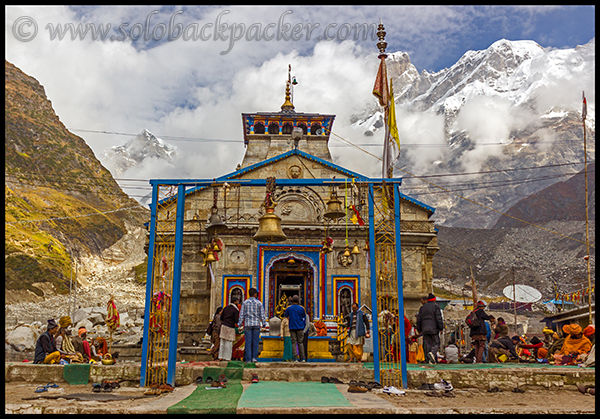
Three years after that tragedy , I didn’t have any inclination to reach Kedarnath shrine. But when the heart wander aimlessly, who knows what is there in the future? When there is less money in the pocket and no particular destination in the mind, then it’s always better to head towards the Himalayas. To spend few peaceful days in the Himalayas, you neither need a particular destination nor much money. I left my home with all these thoughts in the October of 2016, to spend few peaceful days, somewhere in Uttarakhand or Himachal Pradesh without aiming for any particular destination.
The first shock of this trip came at Kashmere Gate ISBT only. I was there after a gap of two years. The old, dirty terminal was replaced with a new, gleaming bus terminal. It looked like an airport terminal. Status of all the buses were available on the LCD Displays. The terminal had the neat and clean ticket counters for many state-run roadways buses to buy the tickets prior to boarding a bus.
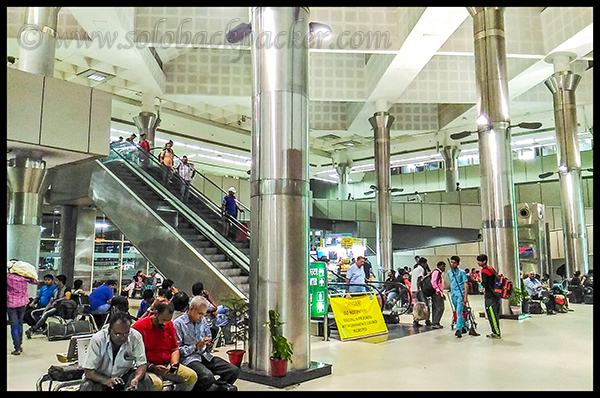
Since I was still confused about my destination, I went straight to the bus platforms without buying a ticket. After walking around for a while, I boarded a bus to Haridwar. But, when that bus started moving, I saw another bus going to Guptkashi from the window. I made an instantaneous decision and within the next few minutes I was inside that bus to Guptkashi (Delhi to Guptkashi–> Approx 410 kms , 13 hours journey, Fare: Approx Rs. 550 per person, Oct 2016). My destination was cleared by then, the holy Kedar shrine of Lord Mahadeva, the same Kedar shrine that was completely destroyed by the rage of a river 3 years ago.
The bus departed from Delhi at around 08.00 PM. It was supposed to make a long duration halt in Rishikesh for 1-1.30 hours. Actually, the public buses of Uttarakhand Roadways; that were earlier operated to the places like Guptkashi, Karnaprayag, Gopeshwar, Uttarkashi etc from Rishikesh, are now extended upto Delhi. All of these buses depart from Delhi at around 08.00 PM and reach Rishikesh at 03.30 AM approximately. After one hour halt at Rishikesh, they again depart simultaneously for the onward journey. It means, if you catch a bus to Gopeshwar or Karnaprayag or Guptkashi from Delhi, they almost run parallel upto Srinagar.
I already travelled on that route few times earlier, so I had no particular interest on the route upto Rudraprayag. I remained sleepy in part of the journey till Rudraprayag. After Rudraprayag, the road along the Mandakini River, towards Augustayamuni , Kund and Guptkashi was completely new to me. The Mandakini river was flowing quietly along the road, the atmosphere was slight cold and on the opposite bank of the river, the small villages, the green fields and the mountains with dense forest covers were enhancing the surrounding beauty. I looked at the calm, serene flow of the river and tried to find out some traces of that 3 years old tragedy. Three years later, the life appeared very normal in that area. The children were going to the school and the market was slowly gaining the pace. The eroded mountains along the river and some broken bridges were the only visible traces of that tragedy, but the life had learnt to move forward with the time.
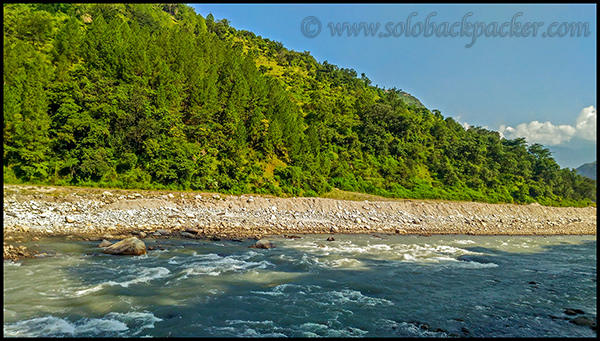
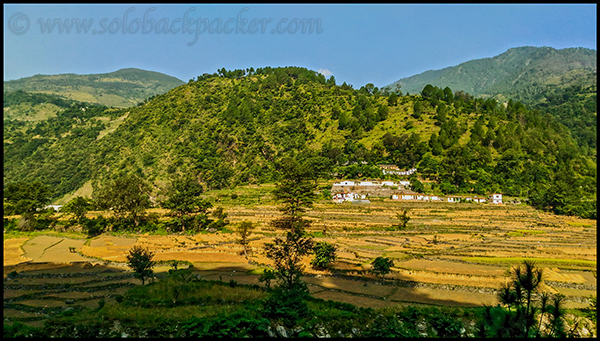
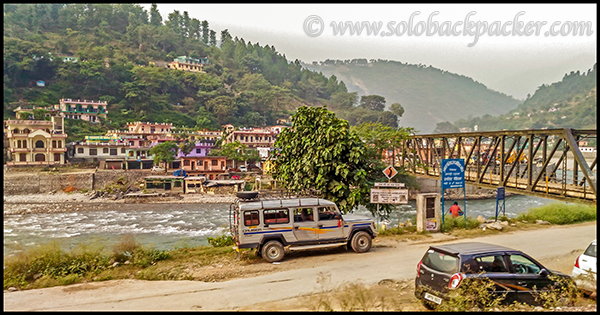
Finally, the bus journey came to an end and I reached Guptkashi by 11.00 AM. Lot of vehicles were available there for the onward journey to Phata or Sonprayag. But, I was looking for a direct vehicle to Gaurikund, the starting point of the trek to Kedarnath Temple. Most of the people travel to Sonprayag by a shared jeep or bus and then catch another shared jeep for onward travel to Gaurikund. It is possible to start the trek from Sonprayag also, but it adds 5 kms extra in the trekking distance and the route between Sonprayag and Gaurikund is not so attractive. After waiting for 30 minutes, I finally boarded a direct shared jeep to Gaurikund (30 kms, 1 hour journey, Fare: Rs.50 per person, Oct 2016).
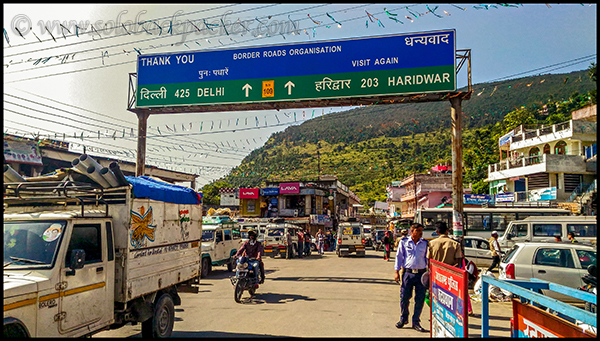
These days, people are very crazy for the helicopter rides to Kedarnath Shrine. Most of the helicopter service providers (3-4) are based at Phata, a small peaceful town at the distance of 15 kms ahead of Guptkashi. Two service providers are based at Guptkashi also. It takes only 10 minutes ride from Phata to Kedarnath (Price: Approx Rs. 7000 for two way, Rs. 3500 for one way per person, Feb. 2017) and since , the helipad at Kedarnath is very closed to the temple, it is possible to visit the temple and then again ride back to Phata within 2-3 hours.
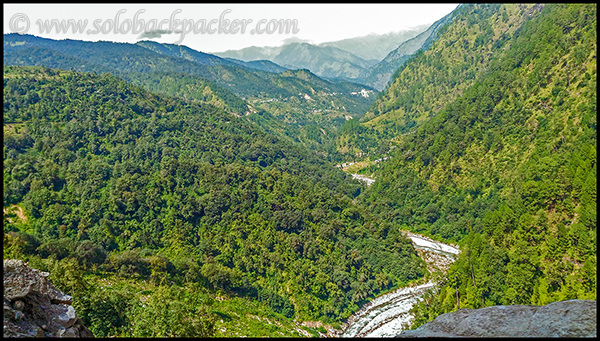
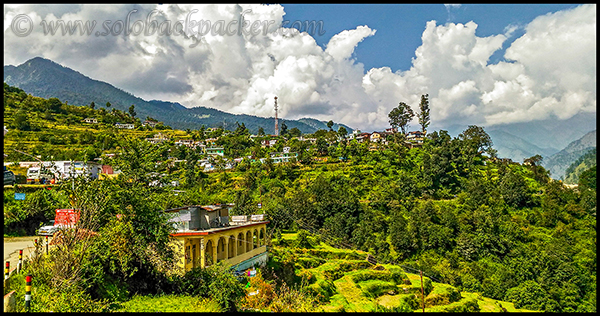
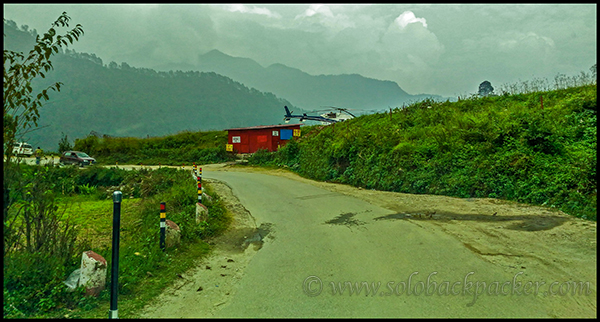
Anyway, I was not interested in a helicopter ride, but a trek. From the helicopter town of Phata, I reached to another town, Sitapur, that has a lot of options to stay overnight. At the end of Sitapur town, a huge construction of an ashram or something similar is ongoing on the river bed. The scale of construction is a clear proof that we did not learn enough from the tragedy of Kedarnath. The primary reason of that catastrophic flood was the uncontrolled tapping of the mountains and the river valleys and 3 years later, we are again moving on the same course.
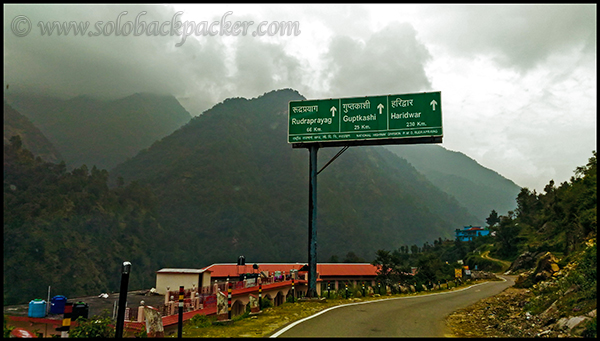
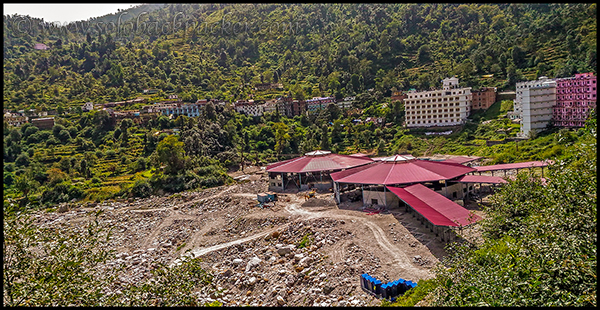
Sonprayag is the last important town before starting of the trek, where you can find a decent accommodation. Few budget accommodations are also available at Gaurikund. A large-scale construction is ongoing near the bus stand at Sonprayag also. Construction of a lot of shops are taking place in a huge building. The human need is more important than anything else, and the fragile ecological system is at the stake like everywhere else.
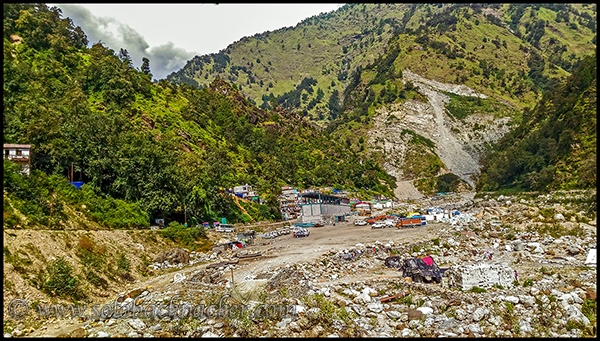
Prayag means the confluence of rivers in the mythology. At Sonprayag, the Mandakini River meets with the Vasukiganga River, the confluence point is approx 200 meters away from the town. Many people stop at the confluence of both rivers to offer their prayers, however, Sonprayag is not a part of the holy Panch Prayag (Five Prayag) journey in Uttarakhand.
There is a registration counter at Sonprayag, where every tourist has to register before moving further to the trek. To conduct the whole Char Dham Yatra in a controlled manner, the registration of the pilgrims became mandatory after the flood of 2013. However, if you forget to register at Sonprayag, there is no harm. The registration counters are also available at Gaurikund and then at the last, just before the Kedarnath Shrine. Nobody is allowed to cross the last registration post near the Kedarnath Temple without the mandatory registration. Most of the pilgrims who ride a helicopter, register at the last registration post only. The online registration is all possible at the nominal charge of Rs 50.
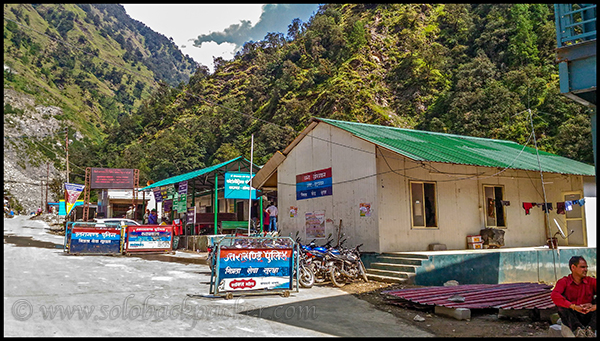
When our shared jeep did not stop at the registration counter in Sonprayag, a policeman waved his hand to stop the driver near the checkpost. The driver informed him that all the passengers are the local people and he was signalled to proceed further. There was at least 5 people in the jeep, aiming for the Kedarnath Trek. But, there was no need to counter the driver’s claim because the registration was possible at the other posts later during the trek.
The small narrow stream flows slowly down the road. It is hard to believe that the stream known as Mandakini River was so fierce three years ago that it washed away a part of civilisation overnight. The other side of the road is daunted by the fragile rocks of the mountains. The stone shootings and the landslides are very common in this area. It took us 15-20 minutes to cover the journey between Sonprayag and Gaurikund.
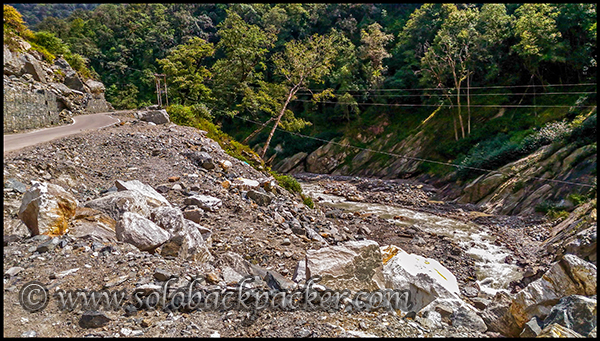
Gaurikund is a small village situated on the bank of Mandakini River. It is the starting point of the trek to Kedarnath Temple. Near the jeep stand, a board was indicating that it is necessary to cross Gaurikund before 01.30 PM to continue on the trek for that day. It was already 12.45 PM. So, I moved further on the trekking route. While trekking to the Kedarnath shrine, you are supposed to cross the different checkpoints by a particular time to continue further on the trekking route. Depending on the crowd on the route, this time limit may be relaxed upto 20-30 minutes.

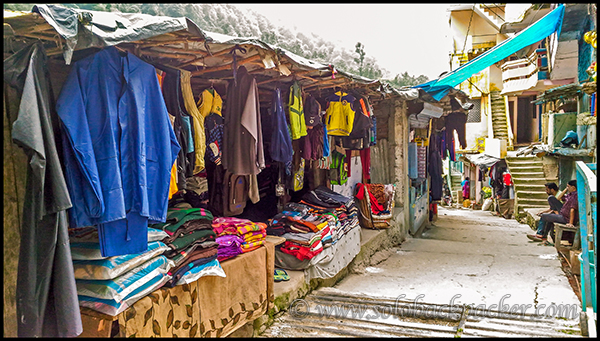
The trekking route is approx 16 kms long from Gaurikund to Kedarnath Temple. The route is covered by few stops where you can get a decent accommodation as well as the foods. Running drinking water is also available through the pipelines all along the way. The route is completely changed and renovated, emergency measures are there in place, a large settlement has been swept away, a new settlement is popping out, a lot has been changed between Gaurikund and Kedarnath in last 3 years. The faith is still powerful to overcome all the difficulties of this journey and despite of the tragic memories, thousands of pilgrims still visit this revered holy shrine every year. I will continue this journey to Kedarnath temple in the next post.


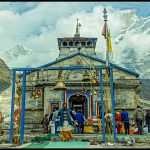
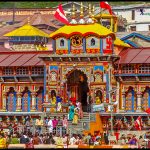
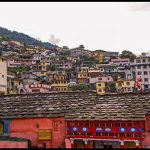
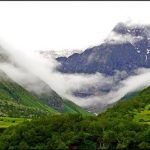
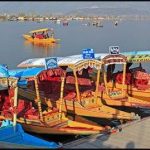
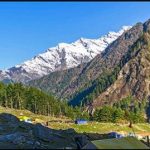
Nice elaborations of all route very informative . I m also planning this year
nicely explained and thank you for the infomations
Very informative and highly useful. Eagerly waiting for part 2. TQ so much
Thank You. You can find part 2 here:
https://www.solobackpacker.com/2017/07/20/a-wonderful-trip-to-kedarnath-temple-part-2-final/
At last, I got a blog which offers not only a nice narrative but beautiful pics too. I am really shocked to learn that again, massive construction is going on (must have completed by now) on the riverbed despite a heart-wrenching tragedy not so long ago. Obstructing the path of river is the biggest folly human beings can do and the culprits are the political leaders, corrupt administration and greedy businessmen. Have you continued your story of the trek? I haven’t gone through it yet.
Regards,
Sushant Singhal
Thanks for this Post. It was really Helpful.
wonderful description with supporting pix… waiting for part 2
Is it possible to pitch our own camps during trek route?
I don’t know exactly. But, I think it is possible.
Just chanced on thi Invo…thanks a lot brother am travelling with kids and parents, this info is very helpful
Excellent job by you. Very useful information. Thanks a lot.
Thankyou so much for the detailed description. As most of my friends turned out on me, I am planning to go solo on this journey in 15 Oct 2017. Anyone up for this during this period is most welcome.:)
waiting for kedarnath part 2 write up. hope u will update sooon
Yes. I am trying to complete that post asap. 🙂
Nice story and pictures!
Reliving our trek to Kedarnath on 25th Sept 2016! waiting for your next post..
Fascinating photography and splendid narration. Love it.
Shubham
Thank You ji. Some credit of this journey goes to you also . 🙂
Very helpful. I am from chennai going to visit in mid July. Solo trip
Great. Have a nice trip. 🙂